SPRINGFIELD – Today, Senators Julie Morrison and Heather Steans filed the Fair Maps Amendment in the Illinois Senate as Senate Joint Resolution Constitutional Amendment 26 (SJRCA26).
SJRCA26 is identical to the amendment Rep. Ryan Spain (R-Peoria) filed in the Illinois House (HJRCA43). The Fair Maps Amendment is modeled after former Rep. Jack Franks’ proposed amendment, which received 105 “yes” votes in the Illinois House in 2016.
“Thank you, Senator Julie Morrison and Senator Heather Steans for standing up against gerrymandering. To the voters of Illinois, the fight for fair maps has always been a battle between the people and the politicians, not between Democrats and Republicans,” said Brad McMillan, Co-Chair of CHANGE Illinois and the Illinois Redistricting Collaborative. “The Fair Maps Amendment has the support of members in both parties, which is a clear indication that this amendment can be the vehicle for change Illinois voters need.”
“Politicians should not be involved with picking which voters they represent. A majority of Illinois residents agree that this process must change,” said Senator Julie Morrison (D-Deerfield). “My proposal would go a long way towards reestablishing trust and credibility with the General Assembly and ensure the public once again feels like they are being represented within their government.”
“Illinois residents should choose who represents them, not the other way around,” Senator Heather Steans (D-Chicago) added. “Under this fair maps proposal, Illinois’ legislative boundaries would be drawn by a commission appointed by members of the Illinois Supreme Court rather than the General Assembly or governor. This proposal aims to restore citizens’ trust in their government and implement a more democratic process.”
Illinois voters overwhelmingly favor redistricting reform. A recent Paul Simon Institute poll found that 72 percent of Illinois voters support turning over the redistricting process to an independent commission.
To address gerrymandering, HJRCA43/SJRCA26 changes the current redistricting process by doing the following:
- Removes politicians and sitting legislators from drawing their own districts
- Establishes an independent redistricting commission that must be demographically, politically, and geographically representative of our state to draw our Congressional and General Assembly maps
- Protects the constitutional rights of communities of color to elect a representative of their choosing
- Adds sunlight and transparency by requiring the release of all communications made by the Commission as well as any data used to create and propose any and all maps
- Gives the public the opportunity to participate in the process by requiring at least 30 public hearings on the maps before a final vote is taken
Key differences between HJRCA43/SJRCA26 and the 2016 amendment proposed by Rep. Franks include:
HJRCA43/SJRCA26
- Commission Make-Up: 16-Member Indep. Commission, with 2 from each judicial district. Political make-up: 7 Dems, 7 Repubs. with 2 Independents (tiebreaker commissioner would also be an Independent). Chosen by two justices of the IL Supreme Court
- Scope of amdt: Legislative & Congressional redistricting addressed
- Public participation: 20 public hearings before maps are proposed, 10 after
- Timeline for approved maps: Maps adopted by Aug. 1, Tiebreaker Commission maps by Sept. 1
Other additions
- Broadening participation: Hearings must give opportunity for racial & language minorities to participate, request use of technology, e.g. live-streaming, to engage broader audience
- Additional Transparency: All Commission communications & data used to create maps are released to the public & the Commission will be subject to FOIA
- Financials: Commissioners will be compensated & will receive appropriations for staff, office space, travel, etc.
2016 Franks Amendment
- Commission: 8-Member Indep. Commission, with 1 from each judicial district. Chosen by two justices of the IL Supreme Court
- Scope: Only addresses legislative redistricting
- Public participation: 15 public hearings before maps are proposed, 5 after
- Timeline: Maps adopted by June 30, year after the Census for maps, Aug. 1 if tiebreaker commission is needed
You can read the full text of the Fair Maps Amendment here.
